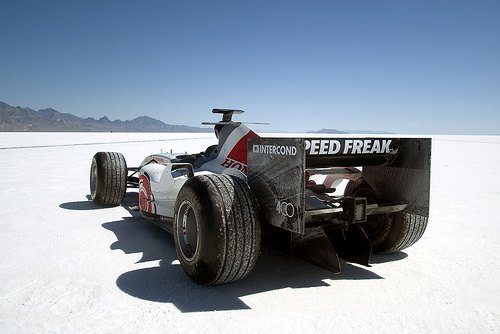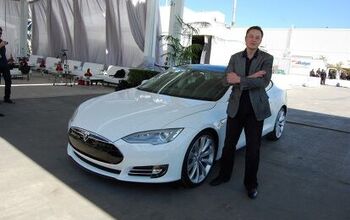Editorial: The Real Honda is in Real Trouble

Americans are accustomed to thinking of Honda, Toyota, and Nissan as being the “Big Three” of Japanese auto production. Not quite. Honda sells more Civics in the United States than they do cars in Japan. A quick troll through Honda’s annual report reveals a corporate iceberg: The tip: Japanese-market auto and motorcycle sales. The nine-tenths below the surface: North American cars-– and Chinese scooters (by unit volume are Honda’s best-selling products).
More than any other Asian automaker, Honda’s fortunes are tied to the United States. The collapse of the American auto market would effectively turn back the company’s clock to 1970, making them once again a small-time producer of two-wheeled vehicles for emerging markets.
So what? Honda’s the small car company! Surely, they’ll benefit more than anyone else from the recession-that-isn’t-quite-yet-a-depression? Not so fast…
When Honda began producing Accords in Ohio twenty-six years ago, all of their cars were smaller than a Chevrolet Citation. Today, the upmarket versions of the Accord tip the scales at close to two tons, while the Civic is bigger than BMW’s 135i. The 2009 Fit is certainly small, but in stick-shift form it can’t even match the Chevrolet Cobalt XFE or (gasp) Ford Focus for EPA highway mileage.
Time for that iceberg analogy again: the public image of Honda in the United States is as a purveyor of small, fuel-efficient models, but the bulk of their sales happen below the water with the Accord, the Acura TL, the forty-five-hundred-pound Pilot and the Cyclops-sized Odyssey. Nor could Honda quickly change their Marysville, Ohio and Lincoln, Alabama plants over to small-car production; these facilities are built around Accord-width vehicles and would require a nontrivial investment of time and money to retool.
Faced with a market which preferred the Fit to the Acura MDX, Honda might just do the easy thing and bring Fits in from their Chinese factories, allowing them to scale back US production to the bare bones.
Honda has plenty of money in reserve– over nine billion dollars in cash and investments. As we’ve seen in the past few months, it’s easy to burn through billions of dollars if you can’t move the metal. Some of that money will also be needed to expand motorcycle production for the Chinese market, and you can bet that, given a choice between spending money in a collapsing American economy or making money in an expanding Chinese one, Honda’s board of directors will choose the sure thing.
While relatively adventurous by the standards of other Japanese companies, Honda doesn’t like to take any risks which aren’t absolutely necessary to its survival.
That same relentless pragmatism has informed Honda’s indifferent attitude towards its enthusiast owner base in the past decade. It has now been a full decade since Honda introduced a new sporting vehicle for the American market. The S2000, introduced to compete with the BMW Z3 and first-generation Boxster, now faces the second-generation Z4 and the second variant of the second-generation Porsche. The Acura NSX, fresh from the indignities of a bug-eyed facelift and a mercy killing, is now officially an orphan.
When times are good, Honda doesn’t do much for their biggest fans; when times are tough, it does nothing at all. The company which powered the mighty Ayrton Senna to three World Championships has just abandoned his nephew Bruno in its ignominious quick-march backwards from Formula One, an unfortunate coincidence that emphasizes Honda’s unsentimental attitude towards the men and women who are fans, not merely owners.
In a perfect world, Honda’s reaction to an economic crisis would be the creation of exciting, enthusiastic cars that met the needs of the economist, the enthusiast and the environmentalist in one brilliant design. It’s happened before: the 1989 Civic Si that I am contracted to drive in NASA’s endurance-race series next year is a prime example of a car that was all things to all small-car buyers. Today’s tubby Civic, lumbering beneath the burden of half again as much weight as its predecessors, isn’t the car for the job, and two-ton Accords won’t carry the company very far into a fuel-starved twenty-first century.
Perhaps the new Insight will be the answer to Honda’s problems. I suspect it will be nothing more than a pale Prius copy. The next generation of Honda cars needs to recapture the tradition of those brilliant early Civics and Accords. More importantly, the company needs to recapture its bond with its most fanatical owners. Without that bond, well, another quote from The Usual Suspects: “And like that, poof. He’s gone.”

More by Jack Baruth
Latest Car Reviews
Read moreLatest Product Reviews
Read moreRecent Comments
- Lichtronamo Watch as the non-us based automakers shift more production to Mexico in the future.
- 28-Cars-Later " Electrek recently dug around in Tesla’s online parts catalog and found that the windshield costs a whopping $1,900 to replace.To be fair, that’s around what a Mercedes S-Class or Rivian windshield costs, but the Tesla’s glass is unique because of its shape. It’s also worth noting that most insurance plans have glass replacement options that can make the repair a low- or zero-cost issue. "Now I understand why my insurance is so high despite no claims for years and about 7,500 annual miles between three cars.
- AMcA My theory is that that when the Big 3 gave away the store to the UAW in the last contract, there was a side deal in which the UAW promised to go after the non-organized transplant plants. Even the UAW understands that if the wage differential gets too high it's gonna kill the golden goose.
- MKizzy Why else does range matter? Because in the EV advocate's dream scenario of a post-ICE future, the average multi-car household will find itself with more EVs in their garages and driveways than places to plug them in or the capacity to charge then all at once without significant electrical upgrades. Unless each vehicle has enough range to allow for multiple days without plugging in, fighting over charging access in multi-EV households will be right up there with finances for causes of domestic strife.
- 28-Cars-Later WSJ blurb in Think or Swim:Workers at Volkswagen's Tennessee factory voted to join the United Auto Workers, marking a historic win for the 89- year-old union that is seeking to expand where it has struggled before, with foreign-owned factories in the South.The vote is a breakthrough for the UAW, whose membership has shrunk by about three-quarters since the 1970s, to less than 400,000 workers last year.UAW leaders have hitched their growth ambitions to organizing nonunion auto factories, many of which are in southern states where the Detroit-based labor group has failed several times and antiunion sentiment abounds."People are ready for change," said Kelcey Smith, 48, who has worked in the VW plant's paint shop for about a year, after leaving his job at an Amazon.com warehouse in town. "We look forward to making history and bringing change throughout the entire South." ...Start the clock on a Chattanooga shutdown.


































Comments
Join the conversation
Honda is staying true to form by dumping likely losers (NSX mess) and money holes (F1), while promoting a few gems (Fit, Insight, CR-Z). Of course they're in full conservation mode; who wouldn't be? I'm a Honda enthusiast and certainly not a fan of some of their decisions, but overall, I believe Honda is playing it smart. I see Honda as a well designed and maintained ship, heading into dangerous waters, with an experienced, confident crew on deck. Of all the world's automakers, is there another in better shape to weather this storm? Nope.
Mr. Baruth: I genuinely appreciate your essay, along with all the reader commentary, about Honda. In the background, I see the ghost of founder Soichiro Honda, grinning with deep pride, as he reads each word. He imbued the company with his "take no prisoners,"take no shit," Shogun Warrior mentality. Admiring and respecting the crusty, old, brilliant, gutsy SOB as much as I always will, I hope he is among the first I get to meet if/when I arrive at the Pearly Gates. Having grown up on Honda motorcycles in the 1960s, I marveled at their jewel-like precision. Unlike the FOOLS who run "Detroit," I knew Honda's near-perfect two-wheel creations would eventuate into four-wheel machinery of similar/superior caliber. The Camry and the Accord have become the "de facto" benchmarks by which every other American sedan is measured. This did not happen overnight, and it certainly did not happen by accident. One of the things they teach one in the graduate Marketing course is about the brilliance of Japanese marketing. Utilizing a "tier-by-tier" strategy, every move must be positive, and every product must be a winner. The Japanese do not have the luxury of making Detroit's countless, famous, expensive mistakes. I OWN two (2) Accords; a 1986 Hatchback LX-i (five-speed), which I purchased some 15+ years ago. And I recently acquired a 2002 Accord Coupe LX V-6. The performance and personalities of these cars are as different as day and night, black and white. But the soul of the founder, and the brilliance of the men and women who designed these incredible machines, burns brightly in my mind, every time I hit the ignition switch. Being business sensible, Honda has to withdraw from F1 and (temporarily) shelve the planned NSX. A good Shogun Warrior knows when survival takes precedence over wish and desire. A V-8/V-10 is necessary for Honda/Acura to create upscale products to compete with Mercedes, BMW, and Lexus. There is no replacement for displacement...and more cylinders. While "Detroit" soon becomes a servant of the U.S. government and Wall Street, my company...HONDA...quietly moves FORWARD! Shogun Warriors (and Ninjas) accept nothing other than SUCCESS!